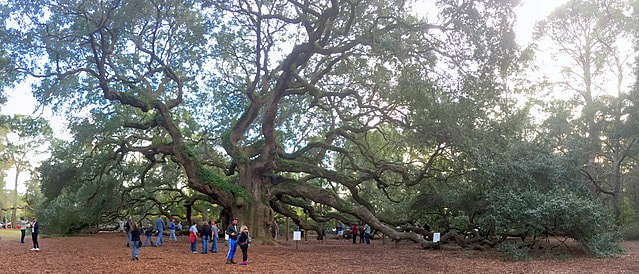|
Here's a fact: the "Carolinas" are crazy about their sweet potatoes.
The root vegetable is the state veggie of North Carolina and Mississippi has been dubbed "The Sweet Potato Capital of the World" But the ruby red that comes from the soils of South Carolina have captured this New Englander's heart. (Pie, pudding, casserole, spirals or mashed with butter, marshmallows, maple syrup or pecans - I love it every way.) Every year the town of Darlington, SC shuts down to honor the tuberous vegetable with a festival of its own featuring products and foods made from sweet potatoes, lots and lots of sweet potatoes. I am going to make a point of visiting the festival in the fall of 2019. In the meantime, I've been digging up some back story on the historic aspects of the of the vegetable. Sweet potatoes originated in Central and South America, but they managed to travel across the Pacific by 1000 AD. This is a curious fact that scientists have uncovered through plant DNA studies. It seems that Europeans, from Christopher Columbus' 1492 voyage onward, were responsible for many of the food transfers between continents. After Columbus, it took just over 50 years for the tomato, a native of Peru, to reach Italy where the sauce-loving Italians were recommending it be fried in oil with salt and pepper, according to Laphams Quarterly. (The British thought tomatoes smelled and were poisonous.) But, 400 years before Columbus, the sweet potato managed to travel 5,000 miles across the Pacific from South America to Polynesia, according to research published in the Proceedings of the National Academy of Sciences. How did that happen? The sea-faring Polynesians may have accomplished the daunting voyage, which would have been like traveling to the moon without knowing the moon was there. The voyage would have taken months. DNA research suggests the Polynesians landed on the west coast of South America and took some sweet potatoes home. Suffice it to say, these roots have roots. According to April McGreger, author of Sweet Potatoes, A Savor the South cookbook, she says that all Southerners owe their lives to sweet potatoes. “Without sweet potatoes, we would’ve probably starved at some point or another, particularly during and after the Civil War.” She goes on to say that the sweet potato is one tough root. It’s thought to possibly be the oldest cultivated crop in the world. While it originated in Central or South America, sweet potatoes were later introduced to the southeastern United States and grown by Native Americans. As Europeans settled into the Palmetto state, the tasty crop became a cornerstone in sustenance farming. The sandy soil that is a hallmark of our region was ideal for sweet potato growth. The nutritious vegetable was especially important to slaves working under harsh conditions. Beneath their cabins, they had root cellars in which they stored sweet potatoes through harsh winter months. But in many ways, not only did these sweet potatoes feed their bodies, they fed their souls. “When enslaved Africans were brought over, the slave ships were provisioned with African yams, which are not at all what we think of as yams here in the United States,” McGregor says. The continent’s yams are starchy and nearly the size of a football. Originally, the plan was to grow these yams in the South, but they didn’t survive the climate. Sweet potatoes — which were less sweet and not as orange as we know them today — worked as a substitute and reminded them of home. During the Civil War, Confederate soldiers, who moved from battle to battle, often had to scavenge for their own food and would rely on the sweet potato greens that they stumbled upon. Into the 20th century, sweet potatoes were associated with poverty as oftentimes it was all some people had to eat. Sweet potatoes have continued to sustain the lives of farmers in recent decades. When the tobacco industry took a hard hit, many farmers turned to growing the sweet potato, an equally hardy crop, as a way to stay in business. Since 1971, North Carolina has been the nation’s top producer of sweet potatoes, supplying about half of the nation’s annual crop. While South Carolina does not produce the volume of crop compared to the north, agriculture remains the number one industry. Farming is expected to reach $50 billion in economic impact by 2020,” Photo Credits: PHOTOGRAPH BY U.S. DEPARTMENT OF AGRICULTURE Author KATIE QUINE, Our State, What is the History of the Sweet Potato?
0 Comments
The photo above was taken in November of 2017 of the Angel Oak on John's Island, just south of Charleston, South Carolina. (Photo Credit: Tony Rice.) The tree is estimated to be 400-500 years old although some contend it is closer to 1500 years old. Age aside, It stands 66.5 feet tall and measures 28 feet in circumference. The shade it produces covers 17,200 square feet and the longest branch is 187 feet long. WOW! The oak derives its name from the estate of Justus Angel and his wife, Martha Waight Tucker Angel. Local folklore tells stories of ghosts of former slaves appearing as angels around the tree. In September of 2018, Allstate Insurance built a TV commercial around the tree called "Still Standing" saluting the strength of the Carolinas after Hurricane Florence. Watching it now brings tears to my eyes. https://www.ispot.tv/ad/dMjh/allstate-still-standing Another stand of oak tress closer to home is located at Brookgreen Gardens in Murrells Inlet, SC. The oak trees of "Live Oak Allee" were planted in the 1700's when the property consisted of 4 rice plantations. A visit to Brookgreen Gardens is worth the trip any time of year. My bottom line is that you can't help but gaze at them in awe. The grand live oak trees that align the highways, back roads and parks across this area take my breath away. I often find myself wondering... How old is that tree? Did that grand white oak tree in the woods live through the Civil War? A white oak can live up to 300 years. So it's possible. I have learned how to figure out the age of a tree and wanted to share it with you. (You know, one of those nerdy trivia things you can now do on a hike to impress friends and grand children!) You can easily calculate the age of any tree including a white oak if you know its circumference and growth factor. All trees grow at different rates and I have supplied the growth rate factors of various trees below. Here's how to do tree age math:
Using a tape measure, find the circumference of the tree (starting four feet off the ground). Divide the circumference by 3.14 (pi) to find the diameter. Now multiply the growth factor by the diameter. Here are growth factor rates for some common trees: Aspen 2.0: Cottonwood 3.0: Silver Maple, Pin Oak, Linden 3.5: River Birch 4.0: American Elm, Green Ash, Red Oak 4.5: Black Walnut, Red Maple 5.0: Sugar Maple, White Birch, White Oak, Black Cherry 7.0: So there you have it. When you wonder how old that tree is in your yard, now you know how to calculate it. And when you visit the Low Country, get in touch. We'll go take a look at some Live Oaks, up close. That's the measure of a good day in South Carolina. |
Explore Living the South Carolina "Hammock Coast" lifestyle from Myrtle Beach to Georgetown, and Beyond!
Archives
July 2024
|
Location1232-B Farrow Parkway
Myrtle Beach, SC 29577 |
Client Kuddos:
|






 RSS Feed
RSS Feed